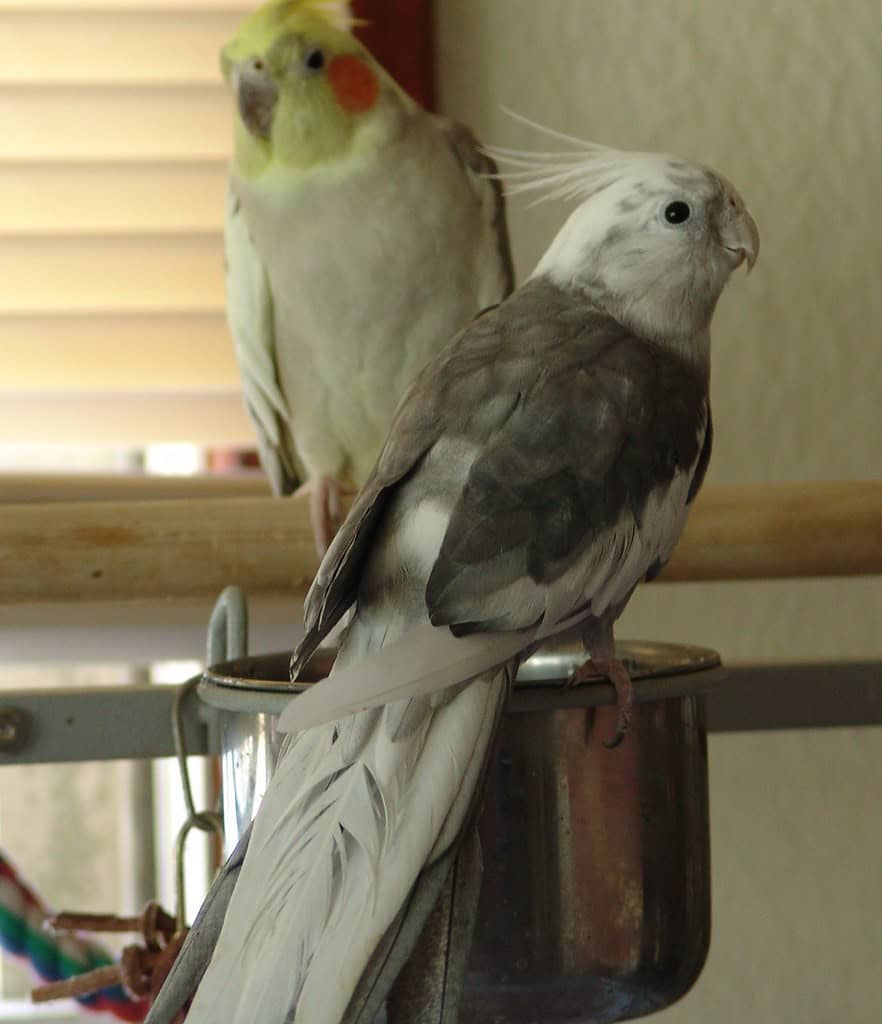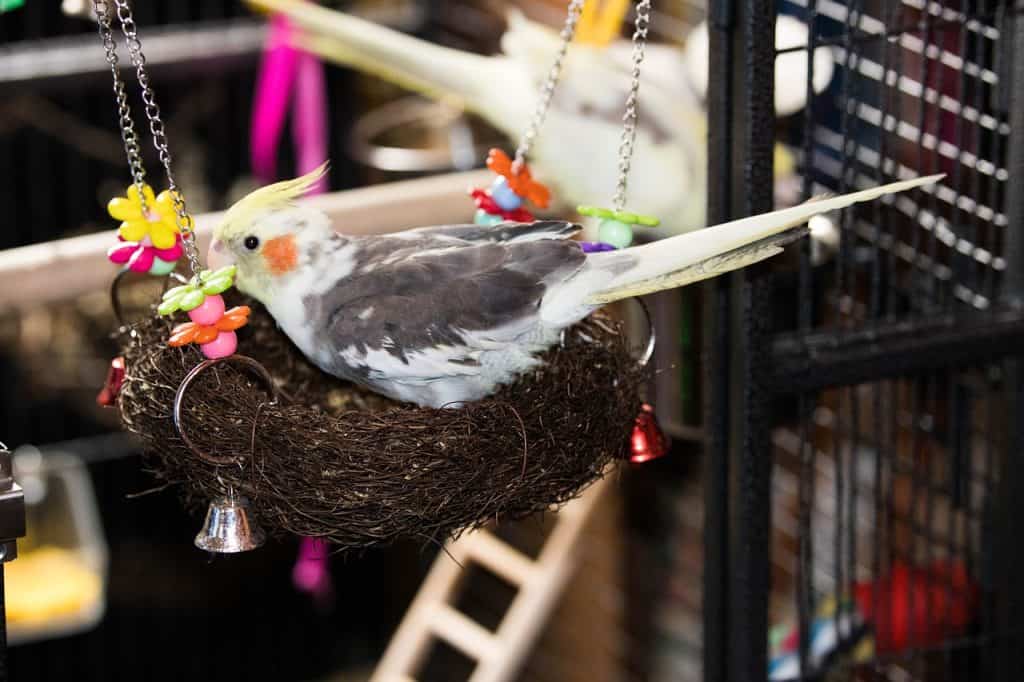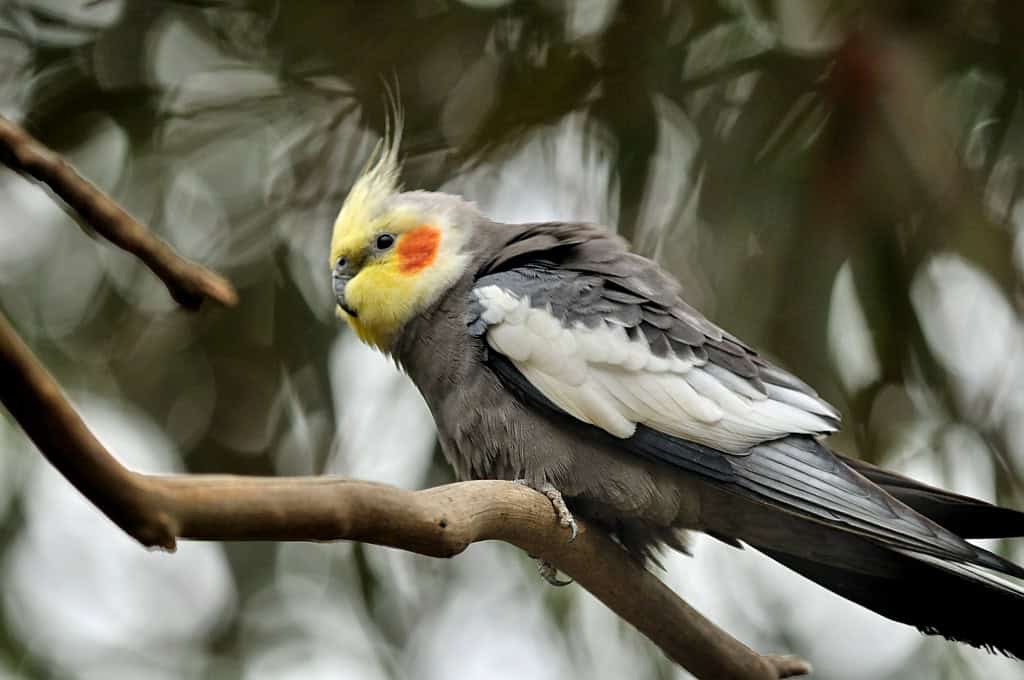Bringing a new cockatiel into your home can be a joyous occasion, but what if your feathered friend is shy or fearful? Understanding how to bond with a scared cockatiel is crucial for building a trusting and loving relationship. It’s not just about patience; it’s about the right techniques that make your pet bird feel safe and secure around you.
If you’ve noticed your cockatiel puffing up, hissing, or shying away, don’t worry—you’re not alone. Many cockatiel owners face these challenges, especially in the early days of their relationship. With the right approach, you can transform fear into friendship, ensuring your cockatiel becomes a cherished companion. Let’s explore some gentle and effective strategies to help your cockatiel warm up to its new environment and to you.
Understanding Your Scared Cockatiel

Recognizing the signs of distress in your cockatiel and understanding the underlying causes are key aspects of building a strong bond with your pet. This knowledge allows you to create a safer and more comfortable environment for your feathered friend.
Signs of Fear and Stress in Cockatiels
Cockatiels exhibit several behaviors that can indicate fear or stress. One common sign is when your bird puffs up its feathers; this is often an attempt to appear larger and more intimidating to potential threats. Hissing and retreating to the farthest point of the cage are also indicators that your cockatiel feels threatened. If you notice your bird’s body language showing these signs, it’s important to identify any stressors in the environment and take measures to mitigate them.
Another indication of stress is a change in vocalization. A scared bird might either become unusually quiet or start to emit loud, sharp calls as a distress signal. Observing and responding to these vocal changes can help you better understand how your pet feels.
Common Causes of Fear
Several factors can trigger fear in cockatiels. A new environment is often a significant stressor as birds need time to adjust to new sights, sounds, and smells. Introducing your cockatiel to its new surroundings slowly can help minimize stress. Ensure that the cage is positioned in a quiet part of your home, as sudden loud noises or excessive activity can easily frighten small birds.
Another cause of fear is negative experiences with humans or other pets. If your cockatiel has had unsettling interactions in the past, it may exhibit fear even in safe situations. Patience plays a crucial role here; frequently spend time near the cage without direct interaction, allowing your cockatiel to become accustomed to your presence. Using soft voice tones and offering treats can gradually help overcome its fear, creating a foundation of trust.
Creating a Safe Space

Creating a safe and welcoming environment plays a critical role in forming a bond with a scared cockatiel. A well-structured space can significantly reduce a cockatiel’s stress levels and promote feelings of security.
The Importance of a Comfortable Enclosure
A comfortable enclosure serves as a sanctuary for your cockatiel, especially when the outside world feels overwhelming. Ensure the cage is spacious enough for your bird to comfortably move, stretch its wings, and fly short distances. The location of the cage also matters; it should be placed in a quiet corner of a room where there’s family activity, but not in the direct line of traffic. This setup allows your cockatiel to observe and get used to the daily routines without the stress of constant interaction. Equip the cage with perches at varying heights and textures to cater to your bird’s preferences and encourage movement.
Tips for a Stress-Free Environment
To create a stress-free environment for your cockatiel, start by maintaining a consistent routine. Cockatiels thrive on predictability, so feeding, cleaning, and interacting at similar times each day can help stabilize their mood. Minimize sudden noises, large gatherings, or other disruptive activities around your cockatiel’s area especially if your bird is still adjusting to its new surroundings. Additionally, keep the cage clean and ensure it has access to fresh food and water daily to prevent any health issues that could increase its anxiety. By focusing on creating a calm, stable environment, you help your cockatiel feel secure and more receptive to bonding activities.
Bonding Basics

After establishing a comfortable environment, you’re ready to begin bonding with your scared cockatiel. Patience and understanding will guide your interactions and routines to foster trust and friendship gradually.
The Right Approach to Initial Interactions
Initiate bonding by spending time near your cockatiel’s cage, allowing it to get accustomed to your presence. Start with sitting quietly beside the cage, reading or watching TV softly. This non-threatening behavior helps your pet feel safe. Gradually, you can move to speaking softly to your cockatiel, using a gentle tone to convey calmness. As the bird shows signs of comfort, like approaching the cage bars or chirping, you can offer treats from your hand, such as sunflower seeds or a favorite treat, to encourage interaction. This initial step is crucial for building trust with your cockatiel, showing that you’re a source of positivity and safety.
Establishing Trust Through Routine
Consistency is key in helping your cockatiel feel secure. Establish a daily routine of regular feeding, cleaning, and socializing times. This predictability aids in reducing your cockatiel’s anxiety, making it less fearful over time. Incorporate activities like hand-feeding and gentle talking during these interactions to strengthen the bond.
Over time, as your cockatiel becomes more comfortable with your presence, try slowly putting your hand inside the cage with food, encouraging it to eat from your hand. This routine not only nurtures trust but also aligns with your cockatiel’s need for stability and safety, promoting a deeper connection between you both.
Interactive Bonding Techniques
Once you’ve created a nurturing environment for your cockatiel and started to introduce yourself slowly, you can begin to explore further bonding activities. These activities help deepen the connection between you and your feathered friend, crucial for a scared cockatiel.
Using Treats to Build a Connection
Offering treats from your hand is an effective way to build trust with your cockatiel. Start by placing their favorite treat, like sunflower seeds or millet, onto your hand and slowly moving it closer to the cage. If the bird seems hesitant, you might need to wait patiently with your hand still until it feels safe enough to approach. As your cockatiel becomes more comfortable, it’ll begin to associate your presence with something positive, reinforcing trust each time it takes treats from your hand. This positive reinforcement helps alleviate the bird’s anxiety and fosters a stronger bond.
Spending Quality Time Together
Spending quality time with your cockatiel is essential, especially in a quiet and familiar setting. Initially, try sitting near the cage and speaking in a soft voice. This non-invasive approach allows your cockatiel to get accustomed to your presence without feeling threatened. Gradually, you can start hand feeding your bird or gently offering it treats through the cage door. As your cockatiel becomes more accustomed to your presence, it might even start looking forward to spending time together. Engaging in these calm, consistent interactions is key to helping your scared cockatiel feel more comfortable and secure around you.
Handling Setbacks
When bonding with your scared cockatiel, it’s critical to understand that setbacks can happen, even with the best efforts. Monitoring progress and recovery closely helps maintain a trusting relationship. Below, you’ll find recommendations on identifying causes of regression and how to fine-tune your approach to keep your feathered friend comfortable and secure.
Identifying Regression and Causes
Setbacks in bonding may be noticeable if your cockatiel suddenly appears more withdrawn or scared than usual. Look for signs like reluctance to approach you or a decrease in chirping and activity levels. These behaviors may stem from a variety of sources, such as sudden loud noises, unfamiliar people in the room, or changes in the environment like rearranging the cage. It’s essential to observe your cockatiel’s body language closely. Fluffing feathers, widened eyes, or retreating to the far end of the cage usually signal discomfort or fear.
Adjusting Your Bonding Strategy
If you detect any signs of regression, reassessing your bonding strategy is key. First, ensure you eliminate any new stressors that may have disrupted the sense of safety within the bonding space. This might mean minimizing noise, reducing the amount of traffic passing by the cage, or keeping the environment around the cage as stable as possible. Next, slowly reintegrate bonding activities that were previously enjoyable for your cockatiel.
Using a soft voice, offering treats from your hand, and spending time sitting quietly near the cage can reassure your bird and demonstrate stability. Additionally, consider reintroducing positive reinforcement techniques, such as target training or small, favorite treats to encourage engagement without overwhelming your bird. Adjust these activities according to the responses you observe from your cockatiel, and remember, patience plays a critical role in overcoming these setbacks effectively.
- CLEAR VIEW- The travel bird carrier has 4 large clear windows to reduce the pet bird's travel anxiety and allow you to keep an eye on your feathered friend. The removable black cloth cover helps keep your bird calm when needed.
- BREATHABLE- Made of breathable, durable, and pet-safe fabric, this small animal carrier has two approriately sized ventilation holes and anti-scratch grids that ensure airflow and comfort for your pets. It also prevents small animals from escaping through the holes.
- PRACTICAL- This bird travel cage includes a washable tray, a wooden standing perch, and a feeding cup with a wire rope to fasten securely. Youll appreciate the small mesh pocket for storing snacks or other small items.
- PORTABLE- The top padded handle and adjustable shoulder strap make it easy to carry by hand or shoulder. Side and bottom Zipper-opening makes it easy to set-up one-minute or folding and cleaning a breeze.
- DIMENSIONS- Featuring a gray color design, it is more resistant to dirt, in addition to being lightweight at 1.65 lbs, measuring 15" x 10.5" x 10.5", suitable for small to medium-sized birds such as parrots, canaries, and finches. Please measure your pet before purchasing.
- MULTI-PURPOSE USE- This carrier can also be used as a Guinea Pig Carrier, Small Animal Reptile Carrier, Hamster Carrier, Rat Carrier, Bunny Rabbit Carrier, Bearded Dragon Carrier. Perfect for vet visits, school trips, or picnics.
Wild Cockatiels and Domesticated Behavior
Understanding the natural behaviors of wild cockatiels can provide valuable insights into bonding with your pet. Wild cockatiels are social birds that often live in flocks, relying on each other for safety and companionship. When bringing a domesticated cockatiel into your home, recognizing their innate instincts can help foster a sense of security.
Managing the Food Bowl
The food bowl serves as a vital component of your cockatiel’s daily routine and can influence their comfort levels. Keep the food bowl consistently filled with fresh seeds, pellets, and occasional fresh fruits or vegetables. This not only ensures nutritional balance but also mimics their natural foraging instincts, promoting a sense of security and stability.
Wing Feather Care
Regular wing feather maintenance is essential for a cockatiel’s health and comfort. Trim any overgrown feathers carefully to prevent flight accidents while allowing enough feathers for short flights within their cage. Additionally, providing opportunities for wing stretching and fluttering helps maintain muscle tone and encourages natural behaviors.
Calming Techniques for Birds
When your cockatiel becomes anxious or stressed, employing calming techniques can help restore their comfort. Playing soft music or using a soothing bird-specific soundtrack can create a calming environment. Additionally, covering part of the cage with a light cloth can reduce visual stimulation, providing a sense of security during stressful situations.
Interaction with Other Birds
If you have other birds in your household, introducing them to your cockatiel requires careful planning. Start with gradual introductions in neutral spaces and monitor their interactions closely. Allow each bird to adjust to the presence of others at their own pace, ensuring a stress-free environment for all feathered companions.
Wrapping Up: How to Bond With a Scared Cockatiel
Bonding with a scared cockatiel takes patience and understanding but it’s entirely possible with the right approach. Remember to stay consistent and gentle in your interactions. Your efforts to create a stress-free environment and your dedication to using positive reinforcement will pave the way for a rewarding companionship.
Keep adapting your strategies as you learn more about your feathered friend’s preferences and watch as your bond strengthens over time. With persistence and love, your cockatiel will begin to see you as a source of comfort and security.
Key take aways on How to Bond With a Scared Cockatiel
- Spot fear early: puffed feathers, hissing, retreating, sudden silence.
- Safe zone: quiet corner, steady temp, multiple perch heights, no drafts.
- Slow trust build: sit near cage daily, soft voice, offer favorite treats from hand—no sudden moves.
- Routine rules: fixed feeding, cleaning, and interaction times reduce anxiety.
- Positive only: reward calm steps with millet; ignore or gently redirect bites—never scold.
- Handle setbacks: identify new stressors (loud noises, new people), revert to shorter sessions, re-earn trust.
- How Can Your Other Pets Be Harmful To Your Cockatiel
- How Cockatiels Show Affection
- How Do Children Make Cockatiels As Pets
- How Do Cockatiels See
- How Do Cockatiels Sleep
- How Do Fumes Affect Your Cockatiel
- How Do You Care For Your Cockatiel Everyday
- How Do You Choose A Cage For Your Cockatiel
- How Do You Medicate Cockatiels
- How Do You Provide Your Cockatiel With Water
- How Do You Select Your Cockatiel
- How Do You Tame A Cockatiel
- How Does A Cockatiel Got Her Name
- How Far Can A Cockatiel Fly
- How Far Can A Cockatiel See
- How Fast Can Cockatiels Fly
- How Good Is A Cockatiels Memory
- How Long Can A Cockatiel Go Without Food
- How Long Can Cockatiels Go Without Water
- How Long Do Cockatiels Actually Live For In Captivity
- How Long Do Cockatiels Live In Captivity
- How Long Does It Take For Clipped Wings To Grow Back
- How Long Does It Take For Cockatiel Tail Feathers To Grow Back
- How Long Should A Cockatiel Be Out Of Its Cage
- How Often Do Cockatiels Lay Eggs
- How Often Do Cockatiels Poop
- How Often Should A Cockatiel Go To The Vet
- How Should I Set Up My Cockatiels Cage
- How To Bathe Your Cockatiel
- How To Bird Proof A Room
- How To Bond Two Cockatiels
- How To Bond With A Scared Cockatiel
- How To Build Trust With A New Cockatiel
- How To Calm A Stressed Cockatiel
- How To Care For Your Cockatiels Health
- How To Care For Your Cockatiels Nails
- How To Catch A Cockatiel
- How To Clean Cockatiel Nose
- How To Clip A Cockatiels Nails
- How To Discipline A Cockatiel
- How To Find A Cockatiel That Flew Away
- How To Get A Cockatiel Back Into Its Cage
- How To Get A Cockatiel To Go On Your Hand
- How To Get A Cockatiel To Like You
- How To Get A Cockatiel To Sit On Your Finger
- How To Give Your Cockatiel Exercise
- How To Grow Millet For Cockatiels
- How To Hold A Cockatiel
- How To Introduce A New Cockatiel To Another
- How To Keep A Cockatiel Quiet
- How To Keep A Cockatiel Warm 10 Tips And Tricks
- How To Maintain A Clean Cockatiel Cage
- How To Make Your New Cockatiel Feel At Home
- How To Manage Multiple Cockatiels In One Household
- How To Monitor Your Cockatiels Health
- How To Prepare Your Cockatiel For Travel
- How To Prevent Your Cockatiel From Becoming Stressed
- How To Recognize And Treat Cockatiel Anxiety
- How To Take Care Of An Older Cockatiel
- How To Tame A Cockatiel That Bites
- How To Tame Your Cockatiel
- How To Teach A Cockatiel To Talk
- How To Tell If A Cockatiel Is In Pain
- How To Tell The Age Of A Cockatiel
- How To Toilet Train Your Cockatiel
- How To Train A Cockatiel To Fly To You 8 Steps
- How To Train A Cockatiel To Poop In One Place
- How To Train Naughty Cockatiels
- How To Transition Your Cockatiel To A New Cage
- How To Transport A Cockatiel To The Vet
- How To Trim A Cockatiels Beak
- How To Trim Your Cockatiels Wings




